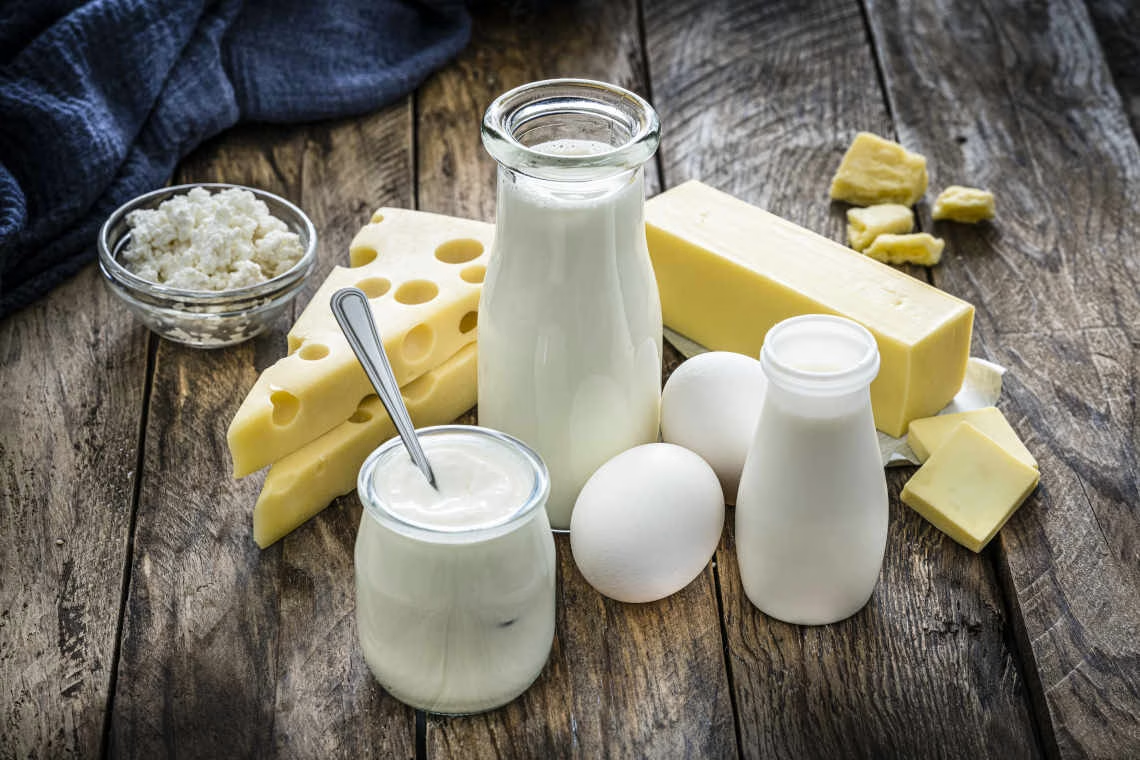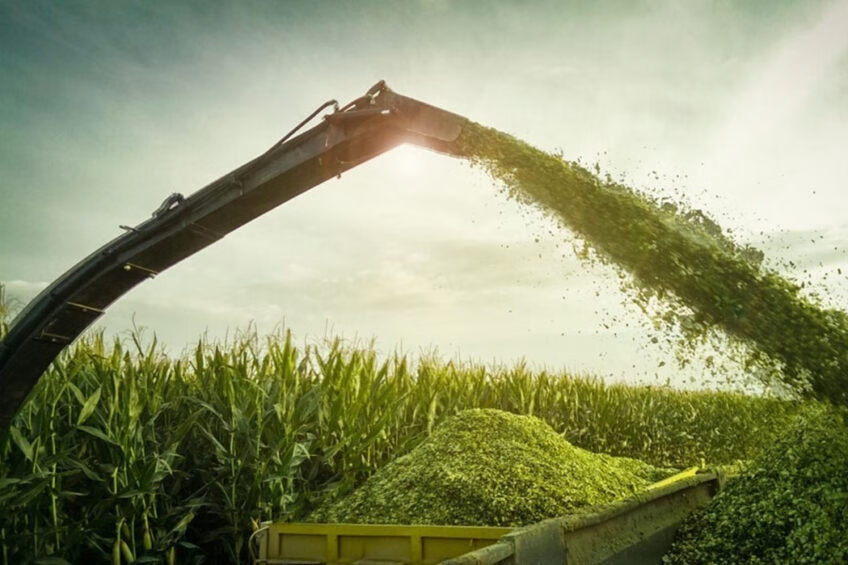Uncover the effects of reduced milk supplies and evolving export trends on dairy prices for 2024-2025. Are you ready to navigate the upcoming changes in the dairy market?

The complexity of the dairy business, particularly in estimating milk output and price, is of utmost importance in 2024 and 2025. Slower milk per cow growth will influence supply, while local and foreign demand swings complicate the situation. The dairy business is at a crucial stage. Understanding these relationships is not just critical, but it also empowers stakeholders, ensuring they are well informed and prepared. Higher cow numbers, shifting commercial exports and imports, and price modifications for dairy products all contribute to the sector’s volatility. Anticipating market trends in the $1.1 trillion dairy sector helps business players manage problems and comprehend their impact on local economies and global food security.
As we navigate the complexities of the dairy market for 2024 and 2025, it’s essential to understand the interplay between milk production, export trends, and pricing dynamics. The data below provides an insightful overview of the projected changes and underlying factors.
Challenging Assumptions: Higher Cow Numbers Don’t Guarantee Increased Milk Production
| Year | Previous Forecast (billion pounds) | Revised Forecast (billion pounds) | Change (%) |
|---|---|---|---|
| 2024 | 227.5 | 225.8 | -0.75% |
| 2025 | 230.0 | 228.2 | -0.78% |
While more significant cow numbers may indicate improved milk output, updated predictions for 2024 and 2025 tell a different story. The key reason for these reduced estimates is slower milk increase per cow, which outweighs the benefits of a large cow inventory. Weather, feed quality, and genetic constraints all contribute to the slow rise in production. Adverse weather affects the quality of feed crops, which are critical for milk production, and genetic innovations face limits that prevent rapid productivity increases. Consequently, even with increased cow numbers, overall milk yield remains below expectations, necessitating a projection revision. It’s the responsibility of industry stakeholders to consider cow numbers and productivity to create accurate estimates and implement successful initiatives, fostering a proactive and responsible approach.
Unveiling the Dynamics of Commercial Dairy Exports: Navigating the Shifting Landscape for 2024 and 2025
| Year | Commercial Exports (Fat Basis) | Commercial Exports (Skim-Solids Basis) |
|---|---|---|
| 2024 | Raised | Lowered |
| 2025 | Reduced | Reduced |
Analyzing changes in commercial exports for 2024 and 2025 indicates a complicated dynamic caused by varied demand and production capacities across categories. Increased butter and cheese shipments in 2024 have boosted fat-based exports, indicating a solid foreign demand for higher-fat dairy products. In contrast, lower skim-solids base exports of nonfat dry milk (NDM) and lactose indicate a shift in the trade environment, which competitive price, nutritional demand adjustments, or trade policy changes might drive.
The forecast is more cautious until 2025. Fat-based and skim-solids-based exports are expected to drop. This might indicate rising internal use, pressure from global competitors, or severe rules limiting export potential. Navigating these obstacles while capitalizing on upcoming possibilities will be critical to the dairy industry’s balanced and sustainable development path.
The Shifting Tides of Dairy Imports: A Detailed Examination for 2024 and 2025
| Year | Fat Basis Imports | Skim-Solids Basis Imports |
|---|---|---|
| 2024 | Raised | Lowered |
| 2025 | Unchanged | Reduced |
In 2024, dairy imports on a fat basis are predicted to climb, owing to rising demand for butter and butterfat products. This tendency is likely due to changes in consumer tastes or industry demands. However, imports are expected to fall on a skim-solids basis, reflecting a demand or sourcing strategy shift. In 2025, fat-based imports are expected to stay stable. Still, skim-solids imports are expected to fall, potentially owing to increasing local production or decreasing demand for commodities such as nonfat dry milk and lactose. These import patterns indicate the market factors that affect the dairy industry.
Projected Price Elevations in Dairy Commodities: Implications for 2024 and 2025
| Year | Cheese ($/lb) | Butter ($/lb) | NDM ($/lb) | Whey ($/lb) | Class III ($/cwt) | Class IV ($/cwt) | All Milk ($/cwt) |
|---|---|---|---|---|---|---|---|
| 2024 | 2.10 | 2.50 | 1.45 | 0.60 | 20.50 | 19.75 | 22.25 |
| 2025 | 2.15 | 2.55 | 1.50 | 0.62 | 20.75 | 20.00 | 22.50 |
Recent steady pricing and tighter milk supply will drive higher dairy product prices in 2024 and 2025. Cheese, butter, nonfat dry milk (NDM), and whey prices are likely to rise compared to prior projections. Cheese prices are expected to climb dramatically by 2024, with butter following suit due to high demand and limited availability. NDM, a key ingredient in dairy products, is expected to rise in price, increasing whey pricing. The trend will continue until 2025, fueled by persistently restricted milk supply and high market prices. As a result, Class III and Class IV milk prices will rise, bringing the overall milk price prediction to $22.25 per cwt in 2024 and $22.50 per cwt in 2025. This increase highlights the influence of limited supply and strong demand on dairy prices, demonstrating the complexities of market dynamics.
Decoding the Surge: Understanding the Upward Forecasts for Class III and Class IV Milk Prices in 2024 and 2025
| Year | Class III Milk Price ($/cwt) | Class IV Milk Price ($/cwt) |
|---|---|---|
| 2024 | 19.85 | 18.00 |
| 2025 | 20.25 | 18.50 |
The increased predictions for Class III and Class IV milk prices in 2024 and 2025 are due to higher costs for essential dairy products such as cheese, butter, nonfat dry milk (NDM), and whey. Class III milk is used in cheese manufacturing, leading to higher pricing due to limited supply and high demand. Similarly, Class IV milk, which is used in butter and dry milk products, reflects growing market pricing for these commodities. Higher product prices directly impact milk price estimates since they are used in industry pricing calculations. With a tight milk supply, robust dairy product prices support these increases in Class III and IV milk price estimates.
All Milk Prices Poised for Significant Rise: Charting a New Trajectory for Dairy Market Stability
The higher adjustment of the milk price projection to $22.25 per cwt in 2024 and $22.50 per cwt in 2025 indicates a substantial change in dairy market dynamics. This gain is driven by tighter milk supply and strong demand for butter, cheese, NDM, and whey. It’s a testament to the sector’s resilience, reassuring stakeholders and instilling confidence in the face of production and export variations.
All Milk Prices Poised for Significant Rise: Charting a New Trajectory for Dairy Market Stability higher pricing per hundredweight (cwt) allows dairy farmers to increase profitability, balancing increased input costs such as feed, labor, and energy. This might increase agricultural infrastructure and technology investments, improving efficiency and sustainability. However, depending on long-term price rises exposes producers to market instability and economic risk. Unexpected milk supply increases, or demand declines might cause price adjustments, jeopardizing financial stability. Stakeholders need to be aware of these potential risks and plan accordingly.
For consumers, predicted price increases in dairy commodities may boost retail costs for milk and milk-based products, straining family budgets, particularly among low-income households. The extent to which merchants pass on cost increases determines the effect. In highly competitive marketplaces, price transmission may be mitigated. Due to price fluctuations, consumers may seek lower-cost alternatives or shift their purchasing habits.
Overall, the expected increase in total milk prices reflects a complicated combination of supply limits and high demand. Farmers and consumers must strategize and adapt to navigate the economic environment and maintain the dairy sector’s long-term existence.
The Bottom Line
The dairy market estimate for 2024 and 2025 demonstrates a complicated relationship between higher cow numbers and slower growth in milk per cow, influencing export and import patterns. Milk output is expected to fall owing to lower milk yield per cow. Commercial dairy exports will grow in 2024 on a fat basis but fall on a skim-solids basis, with an overall decrease in 2025. Fat-based imports will rise in 2024 and stay constant in 2025, while skim-solid imports will fall in both years. Higher prices for cheese, butter, nonfat dry milk (NDM), and whey suggest tighter milk supplies, rising Class III and IV milk prices and driving the all-milk price projection to $22.25 per cwt in 2024 and $22.50 per cwt in 2025. Monitoring supply and demand is crucial for industry stakeholders. To succeed in an ever-changing market, they must be watchful, innovate, and embrace sustainable practices.
Key Takeaways:
- The milk production forecast for 2024 is reduced due to slower growth in milk per cow, despite an increase in cow numbers.
- Similarly, the 2025 milk production forecast is lowered as slower growth in milk per cow overshadows a larger cow inventory.
- For 2024, commercial exports on a fat basis are raised, primarily driven by increased butter and cheese shipments, while skim-solids basis exports are lowered due to reduced nonfat dry milk (NDM) and lactose exports.
- In 2025, commercial exports are expected to decrease on both fat and skim-solids bases.
- Fat basis imports for 2024 are projected to rise, reflecting higher anticipated imports of butter and butterfat products, whereas skim-solids basis imports are lowered for a number of products.
- For 2025, imports remain unchanged on a fat basis but are reduced on a skim-solids basis.
- The prices of cheese, butter, NDM, and whey for 2024 are raised from previous forecasts due to recent price strengths and expectations of tighter milk supplies.
- Higher dairy product prices elevate the Class III and Class IV price forecasts for 2024, with the all milk price forecast increased to $22.25 per cwt.
- These stronger price trends are expected to continue into 2025, further raising projected prices for butter, cheese, NDM, and whey, along with Class III and Class IV milk prices, and an all milk price forecast of $22.50 per cwt.
Summary:
The dairy industry faces challenges in 2024 and 2025 due to slower milk per cow growth, affecting supply and demand swings. Factors like weather, feed quality, and genetic constraints contribute to the slow rise in production, outweighing the benefits of a large cow inventory. Despite increased cow numbers, overall milk yield remains below expectations, necessitating a projection revision. Commercial dairy exports for 2024 and 2025 show a complicated dynamic due to varied demand and production capacities across categories. Increased butter and cheese shipments in 2024 have boosted fat-based exports, indicating solid foreign demand for higher-fat dairy products. However, lower skim-solids base exports of nonfat dry milk and lactose indicate a shift in the trade environment, possibly driven by competitive price, nutritional demand adjustments, or trade policy changes. The forecast is more cautious until 2025, with fat-based and skim-solids-based exports expected to drop. Price elevations in dairy commodities are likely to rise compared to prior projections, with cheese prices climbing dramatically by 2024.











